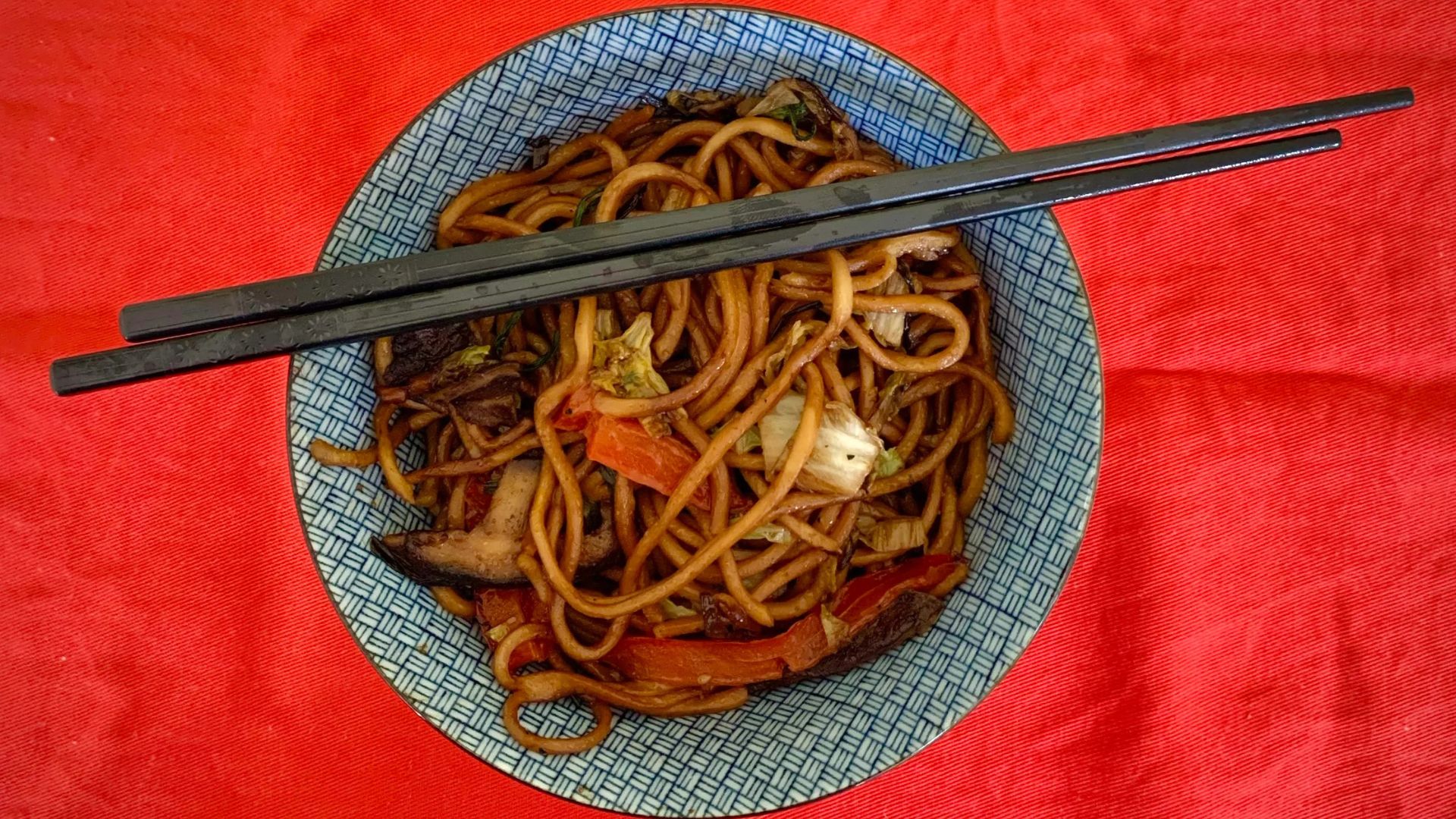Author: Serena Datta.
One of the first friends I made in high school was Chinese, and she invited me over for her family’s Lunar New Year celebration. The first time I walked into their house, the air was alive with the sizzle of woks, the rhythmic chop of a cleaver on a wooden board, and the unmistakable aroma of soy and ginger. At the center of it all was a dish I’d never quite seen before—noodles so long they practically spilled off the plate.
“They’re Changshou Mian,” my friend explained as their mother served them. “Longevity noodles. They’re for long life and good fortune—but don’t break them, or you’ll break the luck!” The story of Changshou Mian winds its way through history, beginning over 2,000 years ago during the Han Dynasty. Legend has it that Emperor Wu observed that individuals with long faces often lived longer lives. In Chinese, the word for noodle (miàn) sounds similar to the word for face (miànzi), so the emperor decreed that eating long noodles could bring longevity. This idea became deeply rooted in Chinese culture, and the tradition of eating uncut noodles as a symbol of long life has been passed down through generations.
Now, whenever I see a bowl of Changshou Mian, I think of that Lunar New Year—of red lanterns glowing softly in the evening, the boisterous crackle of firecrackers and my friend’s family warmly welcoming me as one of their own.
As we step into 2025, a bowl of Changshou Mian serves as a reminder that true longevity reminds us that true longevity comes from the enduring traditions we cherish, and the meaningful connections we build along the way. Let’s embrace health and longevity by incorporating such interesting traditions into our kitchens with the simple recipe below.
Recipe
Servings: 2-4
Prep Time: 15 mins
Cook Time: 20 mins
Ingredients
2 quarts water
2 cups fresh mung bean sprouts or soybean sprouts (about 5 oz.)
1 1/2 teaspoons kosher salt
8 ounces fresh Chinese egg noodles (such as lo mein noodles)
1/4 cup chicken stock or vegetable stock
1 tablespoon plus 1/2 teaspoon light soy sauce, plus more to taste
1/2 teaspoon toasted sesame oil
1 tablespoon peanut oil
1 (1/4-inch-thick) slice unpeeled fresh ginger, lightly smashed
4 ounces fresh snow peas (about 1 cup), strings removed
3 large (1-ounce) fresh water chestnuts, peeled and sliced 1/8 inch thick (about 1/3 cup) or 1/3 cup drained canned sliced water chestnuts
Directions:
Bring 2 quarts of water to a boil in a large saucepan over high heat. Place the bean sprouts in a metal strainer and lower it into the boiling water. Blanch the sprouts for about 10 seconds until crisp-tender. Remove the strainer and rinse the sprouts under cold water for about 30 seconds to stop the cooking process. Drain well and set aside.
Add salt to the water in the saucepan and bring it back to a boil. Once boiling, add the noodles, stirring often to prevent them from sticking. Cook for about 1 minute, just until they are slightly under al dente. Drain the noodles completely using a colander, then rinse them with cold water for approximately 1 minute to stop the cooking process. Drain again and give them a brief rinse. Set the noodles aside, lifting them to separate the strands and allow them to dry. In a small bowl, stir together the stock, soy sauce, and sesame oil. Set aside.
Heat the peanut oil in a wok over high heat until shimmering. Swirl the oil to coat the wok, then add the ginger. Cook, stirring constantly, for about 10 seconds until sizzling and starting to brown. Add the snow peas and cook for about 1 minute until bright green. Add the water chestnuts and cook for an additional 30 seconds. Stir in the bean sprouts and cook until they begin to wilt, about 1 minute.
Add the sauce to the wok, stirring to combine, and bring it to a boil. Add the noodles and stir constantly for about 2 minutes until they absorb the sauce and are heated through. Remove and discard the ginger. Taste and adjust seasoning with additional soy sauce, if desired.
Transfer the noodles to a platter and serve immediately. This dish pairs wonderfully with a side of steamed dumplings or a classic stir-fry, enhancing your dining experience. Enjoy!
Original Recipe Link: https://www.foodandwine.com/recipes/longevity-noodles




